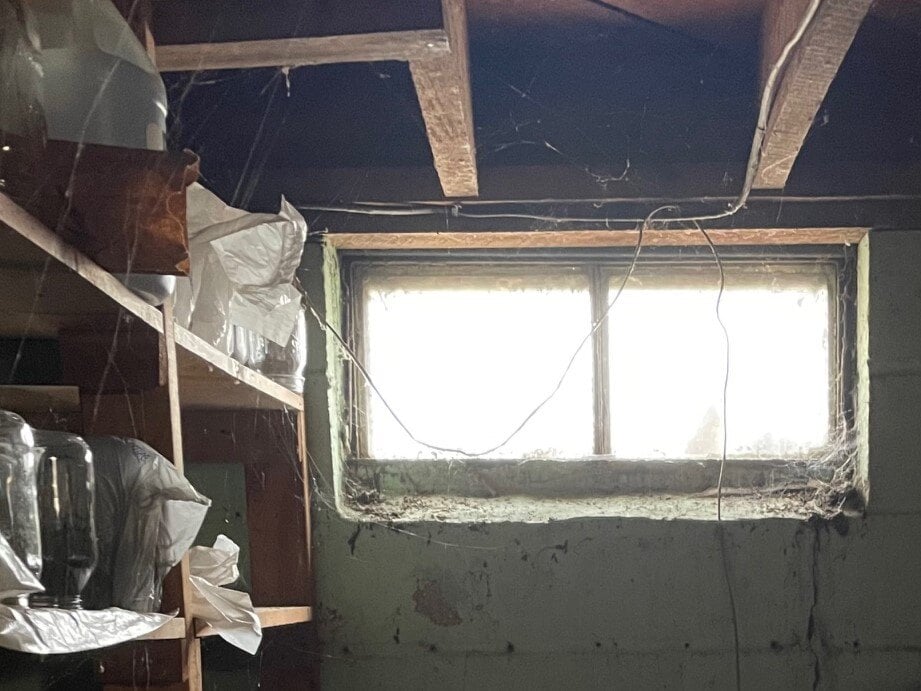
Do basements have to be insulated, or is basement insulation a nice option for homes? If your basement doesn’t have insulation or need to have insulation replaced, will you benefit from paying for that insulation?
South Central Services has insulated hundreds of new and existing homes with spray foam. While basement insulation is a necessary part of home insulation, you have a lot of flexibility in choosing where to insulate and what products to use.
By the end of this article, you will understand:
- Why your basement has to have insulation
- When basement insulation should be replaced
- Whether or not your current basement insulation is functional
- What insulation products can be used in basements
Don't have time to read right now? Check out everything you need to know at a glance.
Building Codes Require Insulation In Your Basement.
For your home to meet building codes, you need insulation in your basement. You can insulate your basement ceiling or your basement walls. You do not need insulation in both places, but you must have insulation in one of the two.
Why Do Building Codes Require Basement Insulation?
If you don’t know much about building science, these building requirements may seem strange. Why do basements have to have insulation? Why don’t we insulate both the ceiling and the walls?
These building code requirements are designed to support your home’s thermal envelope, which is the barrier between your house and the outside world. Exterior walls are part of the thermal envelope, while interior walls are not. This barrier needs insulation to prevent outside temperatures from affecting the temperatures inside.
Your basement is also part of your thermal envelope. If you insulate the walls, you can prevent cold air behind the masonry walls from infiltrating. Or, you can choose to insulate the ceiling. Ceiling insulation allows cold air into your basement but prevents it from rising into your living space.

If you insulate both areas with high-performance insulation, your basement will become its own conditioned space. It would be more difficult for your HVAC system to maintain the conditioned air in the basement. This is why you only need to choose one place to insulate: basement ceiling or basement walls.
Your Basement May Need New Insulation.
Hopefully, your basement already has insulation. After all, if basement insulation is required to meet building codes, insulation should be there. However, even if you have insulation in your basement, it is possible that it needs to be replaced.
An example of basement insulation that may need to be replaced is insulation affected by flooding. Some basements struggle with regular groundwater infiltration, while others may have experienced a one-time flood. If you disposed of your basement insulation due to floodwaters, it needs to be replaced.
If standing water in the basement is a common problem, waterproofing measures must be taken before installing new insulation.
You may also recognize signs that your basement insulation isn’t cutting it. If you have cold floors and high energy bills, contact a qualified spray foam contractor to ask about your insulation options. A professional can tell you if you need to replace what you have or if you need to add to what is already there.
Your Basement May Need More Insulation.
One area where basements almost always need more insulation is the basement band boards (also known as rim joists). Adding more effective insulation to your rim joists can boost the performance of your basement insulation.
However, band board insulation does not always require new ceiling or wall insulation. Just because you could benefit from band board insulation does not mean you have to scrap the insulation you already have in your ceiling or walls.
The standard practice for homebuilders is to insulate band boards with fiberglass batts. While batt insulation is enough for the technicality of building codes, it does not deliver the performance rim joists need.
Your rim joists are where your masonry walls meet your wood ceiling. A significant amount of cold air can infiltrate in this transition from porous walls to wooden floor joists. If you’re experiencing high energy bills and cold floors, band board insulation could be a solution.
Insulating your basement band boards with closed cell spray foam can significantly impact energy savings and comfort. Spray foam insulation offers an airtight seal, unlike fiberglass. Without an airtight seal, cold air will infiltrate from the rim joists.
You Have Many Options For Basement Insulation.
We’ve mentioned several types of insulation in this article. Since you need insulation in your basement, you should know what kinds of insulation can be used.
The following insulations are installed in basements:
- Fiberglass batt
- Fiberglass blanket
- Foam board
- Open cell spray foam
- Closed cell spray foam
Which is best for you depends on how you plan to use your basement and where you will insulate in your basement.
The Bottom Line About Insulation In Your Basement
Building codes require basement insulation. Basements with ineffective insulation have high energy bills. In addition to energy costs, inadequate insulation contributes to a drastic change in cold indoor temperatures during winter.
You can choose between basement ceiling and basement wall insulation. No matter which type of insulation you choose, you should insulate your basement band boards with closed cell spray foam. The airtight seal from the spray foam will stop cold air infiltration.
Now that you know why you have to have basement insulation, your next step is to:
- Discover the best insulations for basement ceilings
- Compare the best insulations for basement walls
- Estimate the cost of spray foam for your basement
Disclaimer: While we strive to publish information accurate to building science, local building codes and standards supersede our recommendations.
Kilian has co-owned and operated South Central Services for 8 years. He is passionate about community involvement. In his spare time, he enjoys being with his family, playing ice hockey, and going fishing with friends.
Topics:


